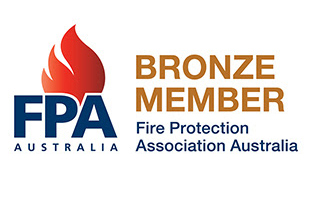BLOG
July 6, 2021
There are many ways to help detect and fight fires, from alarms to extinguishers, hydrants and hose reels. Each piece of equipment works in different ways to help protect you and those around you. When people think of fighting fires, they often think of high pressure water hoses, as these are the kind that firefighters use. There are also hydrants and fire hoses that occupants of buildings can use to help fight building fires in the early stages.
Fire hydrants and fire hose reel systems assist in preventing serious fires by providing a strong jet of water to douse flames. They are found inside and outside buildings in easy access points. They are intended to be used by building occupants to be able to fight fires in their early stages.
They are an incredibly important part of fire safety and can save lives when used properly. It’s important to be aware of the correct use of fire safety equipment. If you or your staff are not trained in using a hydrant and fire hose, you can get training in First Response Fire Training with Brisbane Fire Services.
Hose reel inspection is important because they need to be able to operate under pressure from water flow. If there is any damage to the hose and regular maintenance isn’t scheduled, you could find that the hose reel doesn’t work properly if an emergency situation were to arise. The best way to protect yourself from fire is with preparation, so ensuring that you check fire hose reel inspections off your list is essential.
There are a few important factors that you need to be aware of when it comes to inspections:
Brisbane Fire Services offers hydrants and hose reels inspection, testing and preventative maintenance. As part of our services, we will manage and schedule all of the inspections and testing your equipment will require and carry out any repairs or maintenance required to ensure you’re up to code. We handle everything for you, from start to finish.
Our fire safety professionals will have a fire hose reel inspection checklist in place to ensure that your equipment is properly inspected and maintained, giving you peace of mind.
Your fire safety professional will inspect and test your fire hose reel and hydrant in line with Australian Standards. Some of the things on their inspection checklist may include:
Now an essential part of fighting fires, fire hoses are a relatively recent invention. Up until the mid-19th century, the majority of fires were fought with buckets of water. In the late 1860s, hoses soon became widely available and were able to convey water more easily to the fire from hand pumps, and later steam pumpers.
During this time, hoses were largely made of leather. Then around 1890, unlined fire hoses were invented, which were made of circular woven linen yarns. These hoses were much lighter and when the fibers became wet, they swelled and tightened the weave, which made the hoses watertight. These hoses were not very durable though, so they were soon replaced with lined rubber hoses as the main type used by firefighters.
As technology around rubber production advanced, hose designs improved. Vulcanization provided a means of curing raw soft rubber into a harder and much more useful product. Fire services around the world slowly made the transition from bulky and unreliable old designs to multi-layer, rubber lined and coated hoses that had an interior fabric reinforcement. While these hoses were bulky, heavy, and stiff, they were not prone to leaking. They were also much more durable. This design is similar to those used today by firefighters and different industries, such as fuel delivery hoses for service airliners.
There’s a long history to the fire hose reel and a lot has gone into making it the essential fire safety item it is today. If a fire hose reel inspection is on your checklist for fire safety, get in touch with a professional fire service like Brisbane Fire Services to organise your next inspection. If you have any questions, get in touch with us by calling 0499 198 427 today!

Services
Quick Links
Contact Us